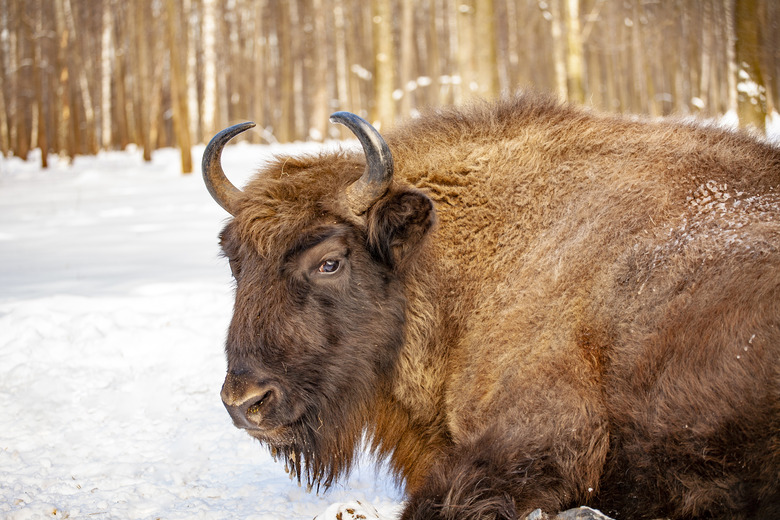How Did Bison Almost Become Extinct?
Formerly a staple of Native Americans in the Great Plains region of the United States, the bison neared extinction in the late 1800s after several initiatives reduced the number of bison to but a few hundred. The systematic slaughtering of the animals continued until the end of the century when attempts began to preserve the bison from extinction.
History
History
Estimates are that as many as 100 million bison roamed North America in large herds before Native Americans began hunting them. Within 100 years of the Lewis & Clark expedition, which paved the way for western settlement of the United States, however, the bison had almost disappeared from western ranges.
Significance
Significance
The near extinction of bison from North America was significant for several reasons. Primarily, the removal of the main source of meat for Native Americans meant that they would be more easily persuaded to move to reservations, allowing for increased settlement in the West. The railroads also wanted to see the bison herds thinned to decrease the danger they posed to locomotives in the region, allowing for more efficient and less dangerous use of the rails for transportation. Professional hunters were happy to oblige both the government and the railroads because bison hides were valuable at the time in making commercial items such as robes and rugs.
Geography
Geography
Bison once roamed North America in herds that stretched as far north as Canada, as far south as Mexico and as far east as the Ohio Valley in the United States. As the slaughter continued throughout the 19th century, bison were eliminated from Mexico and east of the Mississippi River, and what herds remained were limited to the western United States and Canada.
Time Frame
Time Frame
The first region from which the bison disappeared was all areas east of the Mississippi River. American settlers accomplished this by the early 19th century, 1830 by some accounts. The systematic slaughtering of bison west of the Mississippi continued until 1883. Herds in the southwest were almost decimated by 1880; herds in the northwest lasted a few years longer.
Prevention/Solution
Prevention/Solution
Despite pleas from many, including Buffalo Bill Cody, who previously made a name for himself as a professional bison hunter, to protect the animals, bison remained unprotected as a species in the 19th century. It took private efforts at the turn of the 20th century–one herd preserved in South Dakota and another in Montana–to keep bison from extinction.
Cite This Article
MLA
Orlandini, Robert. "How Did Bison Almost Become Extinct?" sciencing.com, https://www.sciencing.com/did-bison-almost-become-extinct-4576942/. 22 November 2019.
APA
Orlandini, Robert. (2019, November 22). How Did Bison Almost Become Extinct?. sciencing.com. Retrieved from https://www.sciencing.com/did-bison-almost-become-extinct-4576942/
Chicago
Orlandini, Robert. How Did Bison Almost Become Extinct? last modified March 24, 2022. https://www.sciencing.com/did-bison-almost-become-extinct-4576942/
